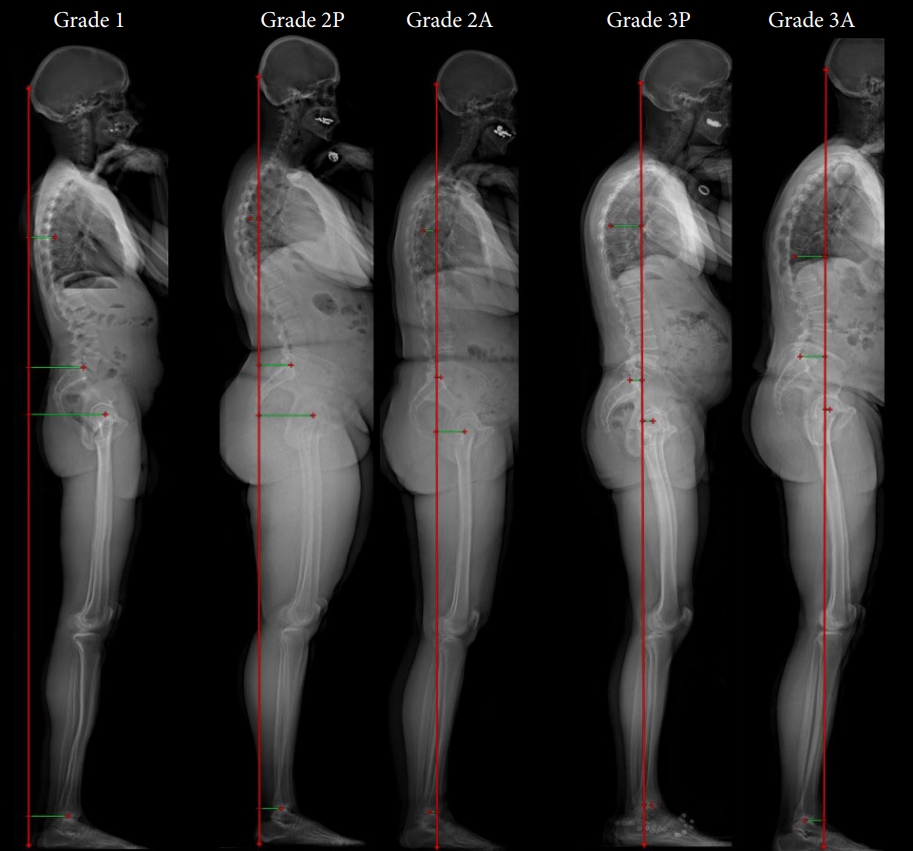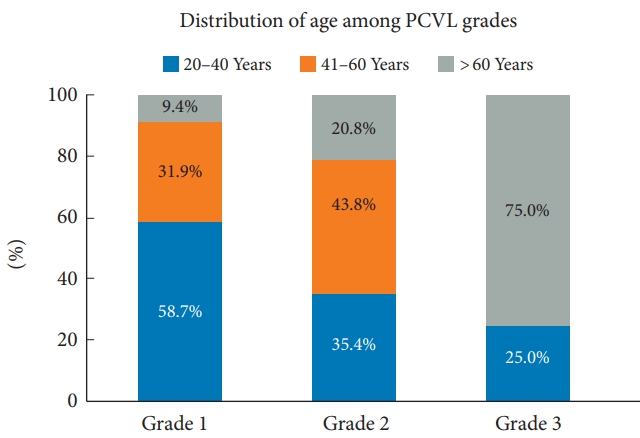 |
 |
- Search
|
|
||
Abstract
Objective
Methods
Results
Conclusion
NOTES
Conflict of Interest
EOS imaging supported the multicentric collaborative group by providing the 3D parameters for the MEANS cohort and a web-based solution for image review. Authors, or their institutions did not receive any funding from EOS imaging relative to this work.
Funding/Support
This study received no specific grant from any funding agency in the public, commercial, or not-for-profit sectors.
Author Contribution
Conceptualization: PJP, ZMS, MPK, SB, KH, HKW, HWDH, HR, JCLH, LGL; Formal Analysis: PJP, FMH, MC; Investigation: LGL; Methodology: PJP, XEF, FMH, CM, NJL; Project Administration: FMH; Writing – Original Draft: PJP, XEF, FMH, CM, NJL, MC; Writing – Review & Editing: PJP, FMH, ZMS, MPK, SB, KH, HKW, HWDH, HR, JCLH, LGL.
Fig. 1.

Fig. 2.

Table 1.
PSVL, posterior sagittal vertical line; TA, thoracic apex; TP, tibial plafond.
Grade 1: The PCVL lies posterior to the thoracic apex (TA) and posterior sagittal vertical line (PSVL). Grade 2: The PCVL lies posterior anterior to the TA and posterior to the PSVL. Grade 3: The PCVL lies anterior to both the TA and PSVL. The “A” and “P” modifiers refer to the PCVL position relative to the center of the tibial plafond in grades 2 and 3.
Table 2.
PCVL, posterior cranial vertical line; SD, standard deviation; BMI, body mass index; PI–LL, pelvic incidence minus lumbar lordosis; SVA, sagittal vertical axis; ODI, Oswestry Disability Index.
Grade 1: The PCVL lies posterior to the thoracic apex (TA) and posterior sagittal vertical line (PSVL). Grade 2: The PCVL lies posterior anterior to the TA and posterior to the PSVL. Grade 3: The PCVL lies anterior to both the TA and PSVL.
Table 3.
| Variable | Posterior (N = 313) | Anterior (N = 19) | p-value |
|---|---|---|---|
| Age (yr) | 40.7 ± 14.1 | 47.6 ± 18.2 | 0.040* |
| Body mass index (kg/m2) | 24.5 ± 5.3 | 22.9 ± 3.9 | 0.226 |
| Knee flexion | -2.0 ± 5.1 | -0.9 ± 5.2 | 0.353 |
| C2–7 lordosis | -0.5 ± 11 | -0.4 ± 12.5 | 0.982 |
| T4–12 kyphosis | 36.6 ± 11.5 | 42.4 ± 9.6 | 0.034* |
| Sacral slope | 39.1 ± 8.6 | 40.5 ± 9.9 | 0.516 |
| Pelvic incidence | 51.6 ± 10.6 | 53.9 ± 13.2 | 0.376 |
| Pelvic tilt | 12.5 ± 7.4 | 13.4 ± 8.0 | 0.599 |
| PI–LL | 9.6 ± 7.6 | 9.0 ± 6.8 | 0.741 |
| L1–S1 LL | 56.8 ± 12.1 | 56.1 ± 11.9 | 0.828 |
| C7–S1 SVA | -7.6 ± 25.4 | 33.7 ± 33.9 | < 0.001* |
| C2–7 SVA | 18.8 ± 9.7 | 29.9 ± 7.9 | < 0.001* |
| T1 slope | 22.6 ± 7.6 | 32.5 ± 7.9 | < 0.001* |
| ODI score | 2.6 ± 4.3 | 3.5 ± 5.2 | 0.375 |
REFERENCES

- TOOLS
-
METRICS

-
- 2 Web of Science
- 0 Crossref
- Scopus
- 1,252 View
- 147 Download


























